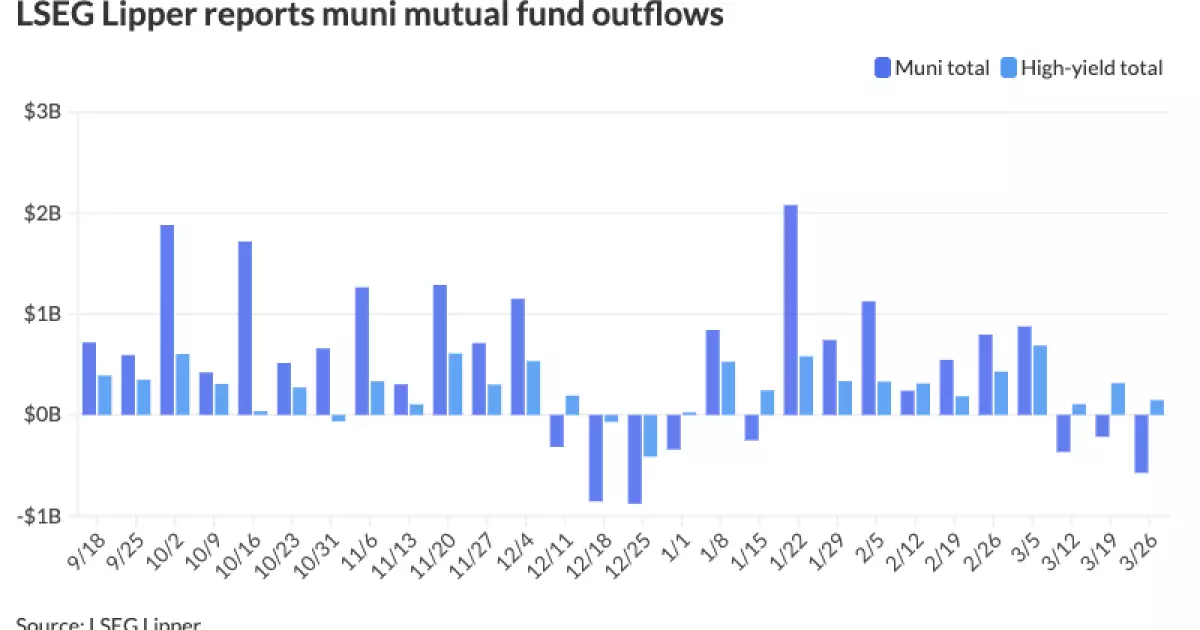7 Undeniable Reasons Why Municipal Bonds Are Facing Turbulence

Municipal bonds have historically been a safe haven for conservative investors looking for stable returns without the worry of hefty taxation. Yet, the current landscape is presenting a perplexing scenario. In recent weeks, municipal bond prices have continued to decline, reflecting market adjustments to the broader economic environment highlighted by increasing yields on U.S. Treasury bonds. As of now, yields are up across the board, with two-year municipal bonds measuring at a disconcerting 69% of their Treasury counterparts. This situation, where more reliable matches yield lower returns, suggests a fundamental shift in investor confidence, leaving many to wonder: what is the driving force behind this downturn?
Increased Yields and Market Sentiment
The upward trajectory of yields is no mere coincidence; it’s a reflection of the prevailing market sentiment influenced by numerous headwinds. Financial experts are pointing towards weak economic fundamentals and fears surrounding the impending fiscal policies from Washington as primary contributors to this unsettling trend. Kim Olsan, senior portfolio manager at NewSquare Capital, encapsulates this sentiment well when she states the phenomenon of rising rates is a “one-way trade.” This encapsulation doesn’t just highlight rising yields; rather, it signifies a broader worry that could overshadow the municipal market for the foreseeable future.
The increase in yields has caught the attention of institutional investors, resulting in a growing aversion to municipal bonds, a phenomenon evident in the alarming $573.3 million withdrawn from municipal bond mutual funds recently. With such hastily executed sell-offs, the market is increasingly wary of commitments that were previously perceived as low-risk investments.
Overwhelming Supply vs. Weak Demand
Another layer to this complex situation involves the oversupply of bonds amidst dwindling demand. Dealer inventories climbed to $15.4 billion, marking the highest level since mid-December. What does this mean for the average investor? It suggests that there’s an excess of bonds chasing dwindling interest from investors—a textbook recipe for a declining market. The robust inventory of municipal bonds, largely due to the drain on interest rates, is indicative of a distribution challenge that could linger, leading to larger yield adjustments as sellers become increasingly desperate.
When opportunities to sell these bonds emerge, they often lead to further declines in prices since buyers are not competing fiercely enough to acquire the high-quality credits at reasonable prices. It’s a situation where buyers can now negotiate confidently, pushing yields into territories not seen since late 2023, which brings forth crucial implications about present market conditions.
A New Landscape for Investors
Given the challenges posed by both market dynamics and investor psychology, it’s crucial for bond investors today to recalibrate their expectations. The introduction of new yield ranges offers both opportunities and risks, especially for those still reeling from the market’s inconsistent behaviors. With rates surpassing 4% for bonds due in 20 years or longer, there are glimmers of value for those brave enough to seek them out. Yet, are investors prepared to take this risk when the environment is clouded with uncertainty?
Considering the recent performance of high-grade credits, including the competitive prices offered on Texas State University’s municipal bonds, it appears that there might be pockets of opportunity for the discerning investor. For those in the market for high-quality coupons and favorable yield structures, the volatile terrain of municipal bonds can still yield profits if navigated wisely.
Shifting Investment Strategies
In order to capitalize on the available opportunities, investors must adapt their strategies accordingly. The introduction of reputable, low-yield trusts and tax-exempt municipal money market funds may offer safer havens for investments, further diversifying portfolios. Institutional players have already begun reallocating funds, evident in the $2.65 billion net inflow into municipal money market funds, showcasing a shift in sentiment. This evolving market sentiment may compel investors to reevaluate their asset allocations, leaning towards more robust, tax-exempt vehicles as a shield against the larger economic storm.
Ultimately, the current municipal bond landscape is characterized by volatility and uncertainty. Yet, understanding the foundational shifts within this market can open doors to strategically lucrative opportunities, provided that investors are keen-eyed and alert to the risks at play. The daunting numbers we’ve witnessed should serve as a wake-up call, pushing investors towards prudence rather than panic buys—a mantra crucial for navigating these treacherous waters.





